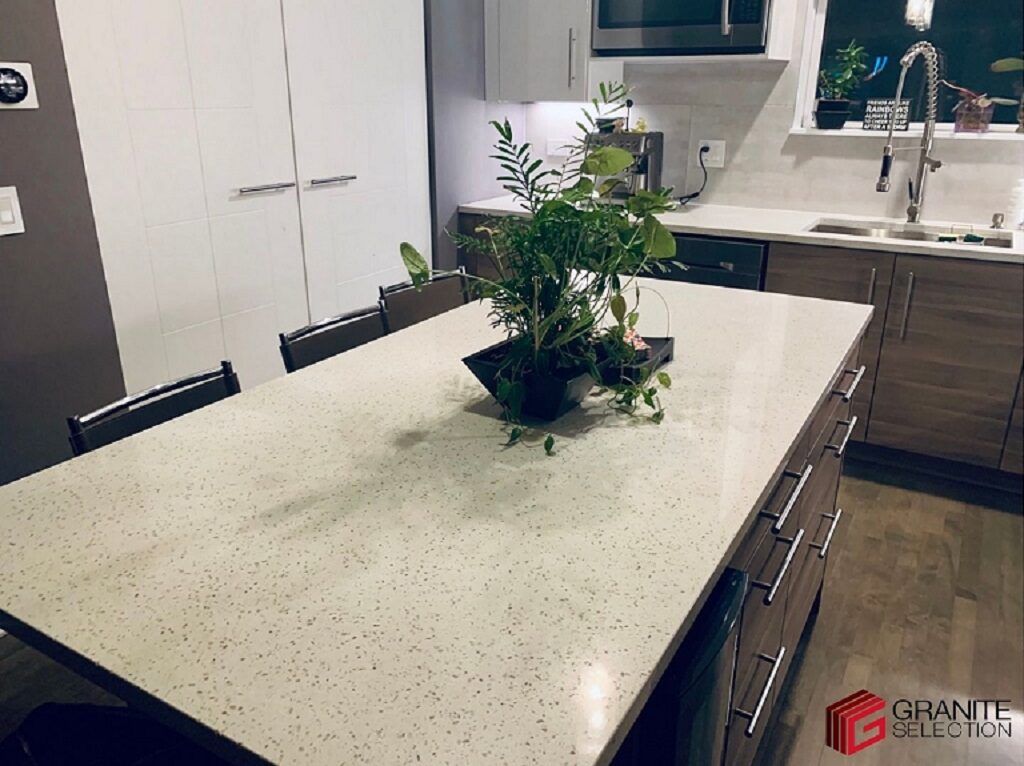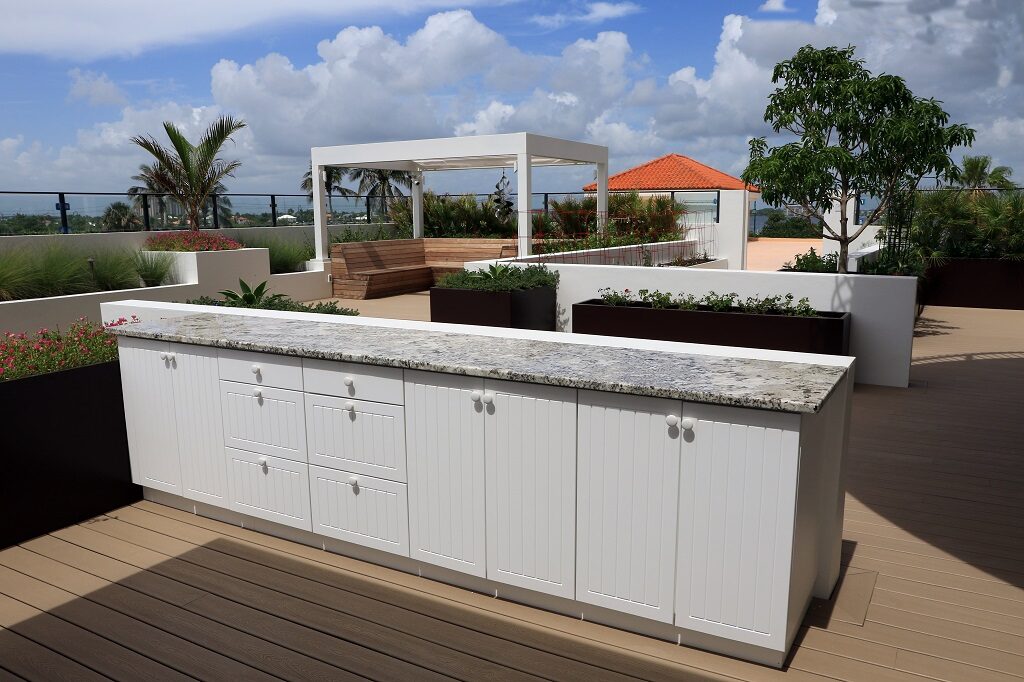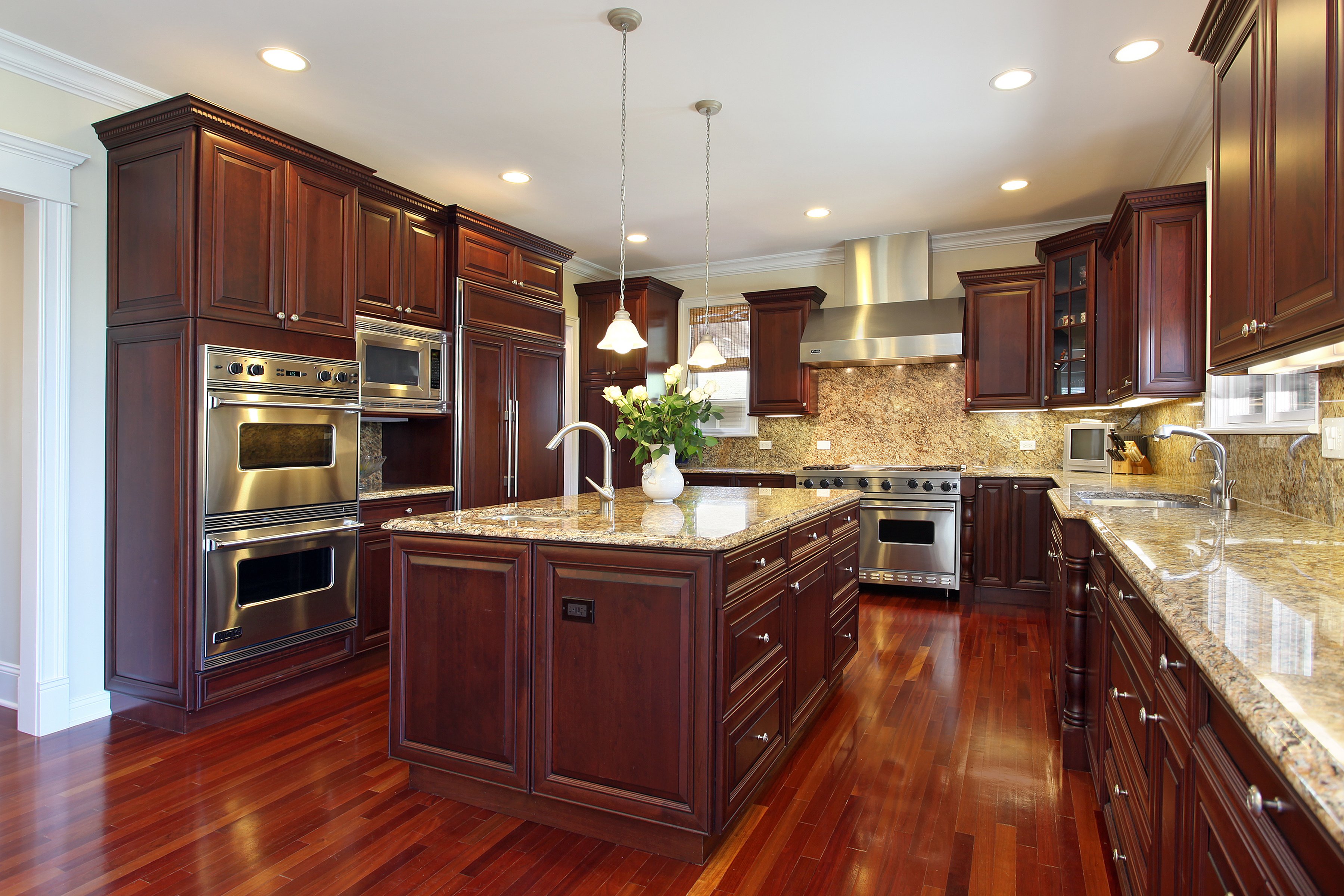Concrete Countertops vs Granite: Which One Is Better?


If you’re looking to upgrade your kitchen or are designing one from scratch, how do you decide which countertop material is best? Currently, there’s a lot of debate around concrete countertops vs granite. In this blog, our specialists compare the two, so you’re informed on the pros and cons of each.
Appearance and Color Options
Granite: Composed mainly of quartz and feldspar with small amounts of mica, and other minerals, granite is an igneous rock that forms when magma cools beneath the earth’s surface. Its particular mineral composition gives it a red, pink, gray, or white color with dark mineral grains visible throughout.
Concrete: Concrete is highly customizable and comes in virtually any color—not just gray that probably comes to mind! Because countertops are poured rather than quarried from slabs of rock, they are not bound to traditional slab layouts and can feature sculpted forms and ergonomic design elements.
Installation of Granite vs Concrete Countertops
Granite: Experienced DIYers would most likely be able to install granite countertops if they are straight with no inside corners. However, if your kitchen is like most, you’ll have to do some cutting and seaming. Because granite is very heavy, it usually requires professional fabricators to transport and install it.
Concrete: Concrete countertops need to be cast and cured, meaning it may take a few weeks or days before they’re ready to use. While it’s possible to DIY them, the process is quite intricate, so we’d recommend hiring professionals. Due to its weight, you will likely require new, stronger cabinets or have to reinforce existing ones.
Durability and Maintenance
Granite: Due to granite’s porous nature, it can stain if spilled liquids are left on its surface for too long. Damage can also be done in the form of chips and cracks if the countertop receives a high-impact blow. However, it is incredibly durable and resistant to heat and other elements. Granite countertops should be cleaned after use with mild detergent or soap and water.
Concrete: Are concrete countertops durable? Yes, the strength of its cement-and-sand mix makes it a solid design choice. However, hairline cracks may appear over time as the concrete settles. Cracking is preventable by adding rebar, mesh wire, or fiber reinforcement during the casting process. Concrete should also be cleaned after use and waxed monthly to protect its finish.

Sealing
Granite: Most granite technically doesn’t require sealing. However, fabricators will add it as a precaution. A properly sealed countertop repels water instead of letting it penetrate the stone and leave behind etch marks, causing an “ugly” appearance. It also prevents the build-up of unhealthy bacteria. We recommend sealing granite countertops at least once a year to maintain their finish.
Concrete: Because concrete countertops are naturally porous, they should always be sealed to protect against food stains, scratches, and water absorption. The correct sealer doesn’t just protect the surface but also enhances the color and sheen. Concrete countertops should be sealed every one to three years.
Stain Resistance
Granite: No countertop is 100% stain-proof; however, concrete countertops are relatively stain-resistant, provided they have been properly sealed. A word of caution: Spills that are left may lead to stains, especially if the liquid soaks into the stone. Even water can produce etch marks if left unattended.
Concrete: So, do concrete countertops stain? Yes, just like granite. If left untreated, stains develop into patinas over time, providing a rustic look, which some homeowners like. Regularly applying sealing and wax will protect its surface and prevent this from occurring. Like most countertops, proper care aids stain resistance.
Heat Resistance
Granite: Countertops made from granite are some of the most heat-resistant on the market. While putting a hot pot or pan up to 1,200 degrees Fahrenheit directly on granite probably won’t damage its surface, we always recommend using trivets to increase longevity. Placing hot items on granite for long periods of time may cause discoloration on the sealant layer.
Concrete: Like granite, concrete is very heat-resistant; however, it’s still best to avoid placing hot pots and pans on its sealed surface, as the heat may also cause discoloration. As a precaution, you should always use trivets and pads when working with hot pots and pans.
Outdoor Use
Granite: Durable and not susceptible to UV ray fading, granite is arguably the best natural stone countertop for outdoor use. Another reason granite is well-suited for the outdoors is that countertops can be built around stones, pizza ovens, grills, and other hot appliances without worrying about the heat!
Concrete: Concrete kitchen countertops are an attractive outdoor option due to their low maintenance and design flexibility, especially for outdoor areas with circular configurations. The only thing you need to ensure is that the concrete mix is tailored to meet the challenges of outdoor environments, meaning you need a mixture that is strong, durable, and dense.

Cost of Concrete Countertops vs Granite
Granite: The cost of granite countertops naturally depends on the type of granite, the project size, and the labor required. It can cost from $40-$60 per square foot, with the total, including installation and materials, coming from $2000 to $4500.
Concrete: The concrete countertops cost vs granite is surprisingly more. Generally, they are not cheaper than granite, and at around $65 per square foot, while basic granite is $65. This is because concrete countertops come with higher labor costs. They’re artisan products that, unlike granite which is bought in slabs, have to be made from scratch.
Granite Countertops That Look Like Concrete
Homeowners that like the aesthetic of concrete countertops are sometimes discouraged by the price. Luckily, we stock granite that looks like concrete, providing you with great value-for-money that doesn’t compromise on style.
Mystic Gray
This anthracite-colored dark gray granite features a mid-tone background with dramatic speckles that add dimension. Quarried from Brazil, Mystic Gray coordinates well with mosaics, natural stone tiles, and porcelain tiles. This stone is especially good for exterior and interior applications.
Azul Platino
Specks of black and gray characterize this low variation gray granite. Azul Platino is quarried from Spain and has a slight blue undertone that blends well with most interiors and bathrooms. This granite looks great with a polished, honed, or leathered finish, and is suitable for those who want a medium-grained stone.
Silvestre Gray
Silvestre Gray is a warmer-toned granite with a light gray base coloring that pairs well with cream colors. Ideal for kitchen countertops, its beautiful surface possesses yellow and brown pigments that alter the uniformity associated with concrete gray.
Conclusion
When it comes to concrete countertop vs granite, both are durable and smart countertop options. However, they do have different properties and slightly different aesthetics. At Granite Selection, we’re proud to have helped many homeowners choose and install their dream kitchen counters. We’re always happy to assist, no matter the project scope. If you’re erring towards granite, then we have a large selection of gray and other colors to suit every design palette. Take a look at our wonderful granite specials and get a detailed quick quote for your project. Contact us today!




